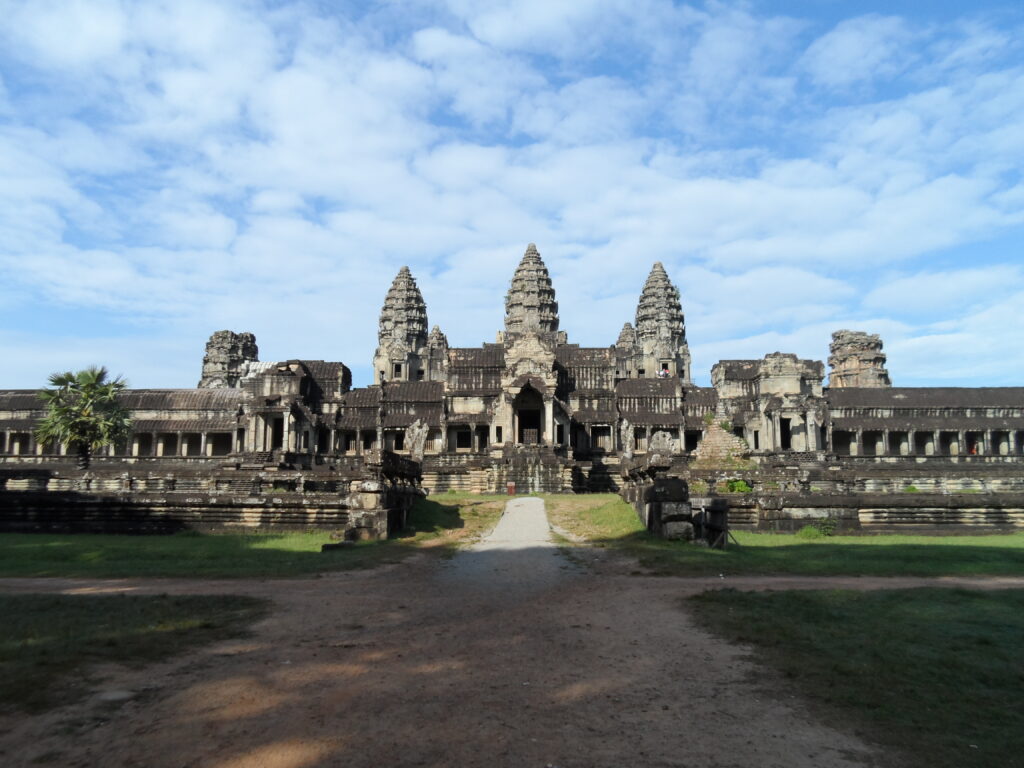
Hidden in the dense jungles of southeastern Asia are a series of ancient religious temples that have captured the imagination of travelers and writers alike. Take a moment to explore the famed Angkor Wat.
The massive complex has inspired many books and film from Indiana Jones to Lara Croft Tomb Raider. The latter of which was filmed on site at the Ta Prohm location (To be visited in a future blog). It’s hard not to look at the crumbling infrastructure and imagine what the once bustling community looked like in its prime.
Located in the outskirts of Siem Reap Cambodia, the region can be easily reached by air by connecting through Bangkok on a 45-minute flight. Breeze through the small open-air airport, grab a tuk-tuk or motorcycle, and you can be exploring the Angkor complex grounds within the hour.
Angkor Wat features prominently in all things Cambodia. You can find T-shirts, beer, and numerous religious artifacts that come with the triple-spired temple on its side. Solidifying its role in the nation, Angkor Wat has sat at the center of their flag since 1850.
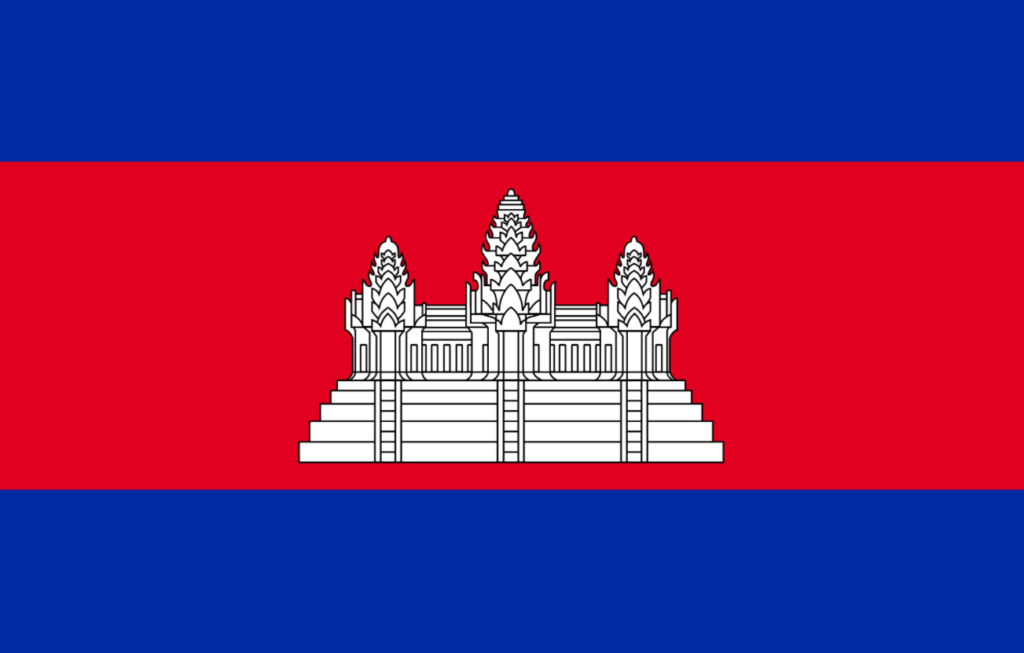
One of the more surprising aspects of a visit to the area is that Angkor Wat is only one temple in a compound that is sprawled across 400 acres. A UNESCO world heritage site, exploring the grayed stone paths that traverse the backcountry of Cambodia is a must.
The jewel of the complex is the Angkor Wat temple. The biggest temple in the world, the grandeur of the shrine is best viewed at sunrise. The early wake up is worth it as the light grows and illuminates the four towers surrounding the central spire. Mist swirls from the waterways and Angkor Wat rises into prominence.
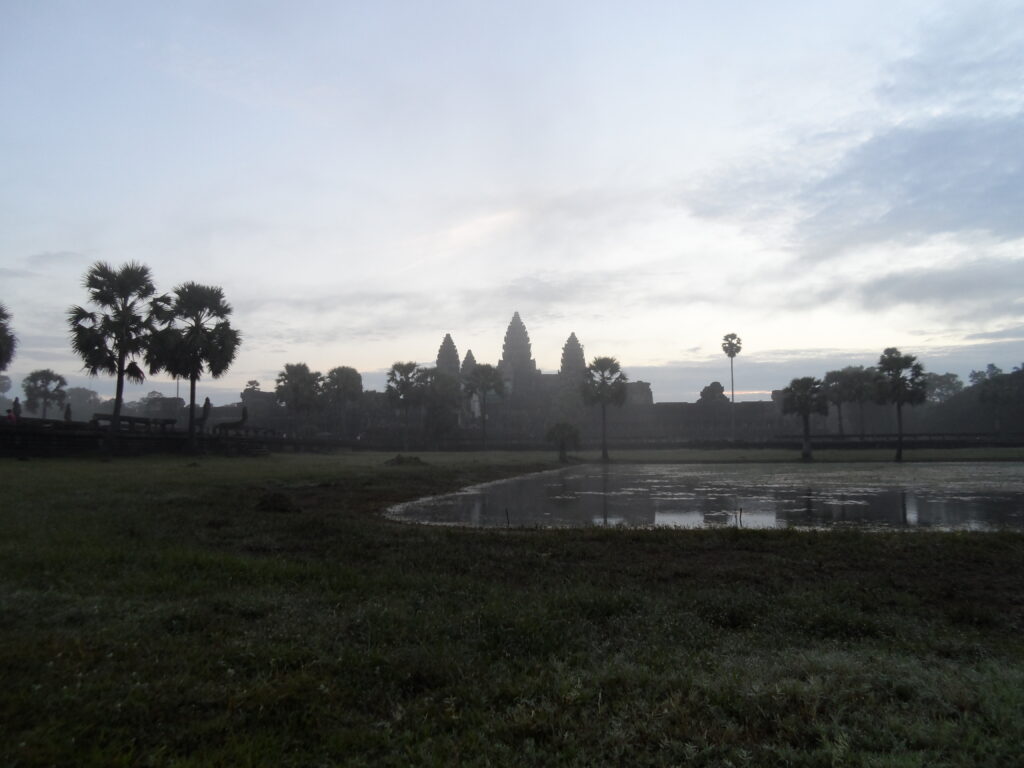
Fair warning, if you are the intrepid travel hoping for a serene moment alone, this will unfortunately disappoint. What can’t be seen in the photo is the throngs of tourists brought in by tour bus to capture the same perfect moment. That being said, the area is large enough that it is still more than possible to find a slice of peace to observe the sunrise. Pro traveler tip: Work toward the southern side of the temple (where the photo above is taken). The most popular area is along the central approach and across the reflective pond on the north side.
Additional pro traveler tip: All the bus tourists depart immediately after sunrise to head back to town for breakfast (They will usually return to the temple in mid-late morning). This leaves the temple mostly vacant in the few hours post-sunrise, and I highly advise taking advantage of this time for seeing the famed site.
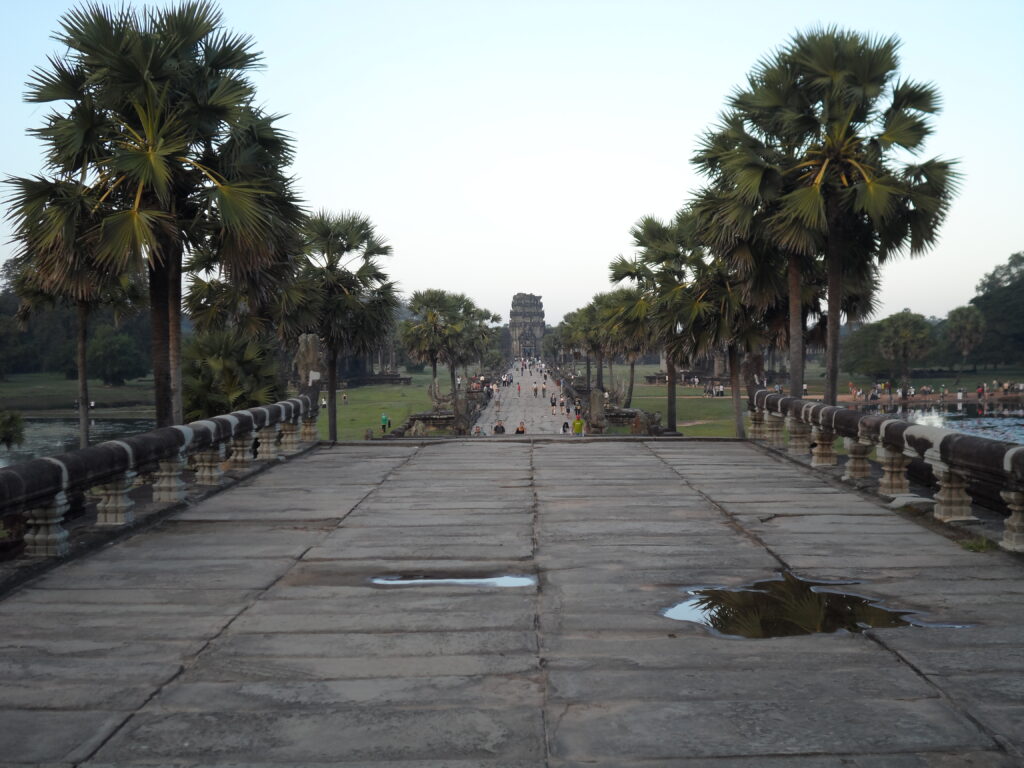
The temple has an outer fence that stretches nearly four kilometers long, and outside the wall, a moat adds an additional layer of protection. A stroll along the central palm tree-lined walkway takes you to the front of the sanctuary. Up close, the details of the aged stone become apparent. Built in the early 12th century at the guidance of Suryavarman II, Angkor Wat acted as the state temple and capital of the Khmer Empire.

Touring the site gives a glimpse at the Khmer architecture that would spread around the vast majority of southeast Asia that includes modern day Cambodia, Thailand, Laos, and Vietnam. Every wall of the structure contains unique designs that are carved into the stone. The rock was then meticulously put together to build the height of the edifice. This can be seen clearly in the photo below.
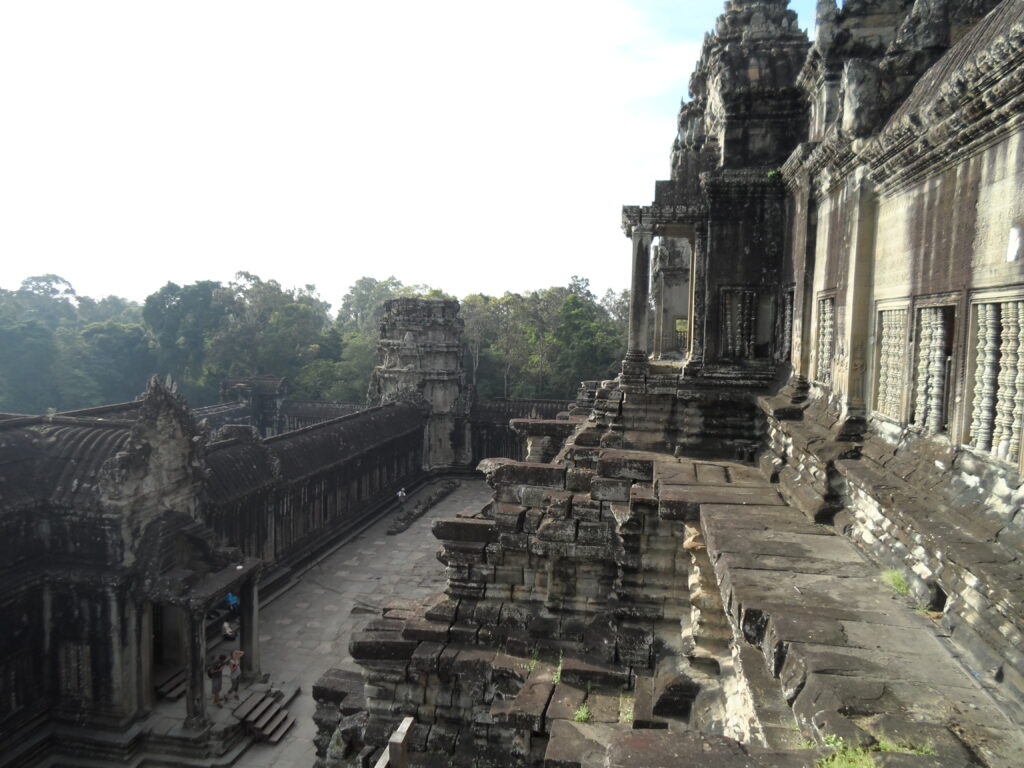
The temple was originally built as a Hindu sanctuary, dedicated to Vishnu by King Suryavarman II. However, only 27 years after the king’s death, Angkor Wat was taken over by the Chams, a Vietnamese based culture. The Khmer empire was then rebuilt by King Jayavarman VII. With the sense that the Hindu Gods had abandoned him, he built a new capital and state temple a few kilometers to the north in what is known in modern day as Angkor Thom and Bayon (These will be explored in my next blog entry!). These new structures were built to serve Buddha, and over time, all structures including Angkor Wat were converted to Buddhism.
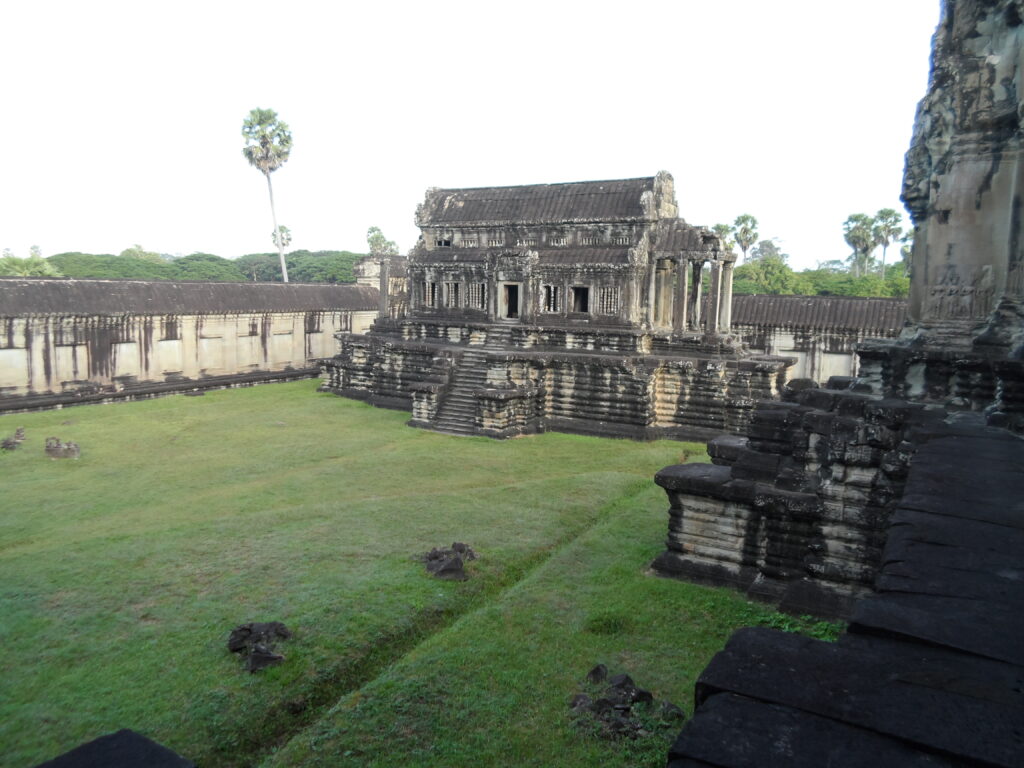
The temple is built with a central elevated structure with the five towers rising high above. It is likely the five points were meant to signify Mount Meru, a sacred five-peaked fictional mountain representing the center of all physical, metaphysical, and spiritual universes. Outside of the central building, the temple is squared off with galleries. Each gallery depicts a different stone-carved motif of the era. Outside the wall of the gallery to the east, a glimpse of the dense jungle provides a sense of what it would have felt like to live and work in the region in ancient times.

In addition to the shrine’s architecture, the local fauna takes advantage of the area. The grounds are swirling with a pack of over sixty Macaque Monkeys. These animals add to the mystique of the grounds and should be enjoyed from a distance. Be forewarned, the Angkor monkeys are famed thieves of all things edible (Plus sunglasses and cameras as well).
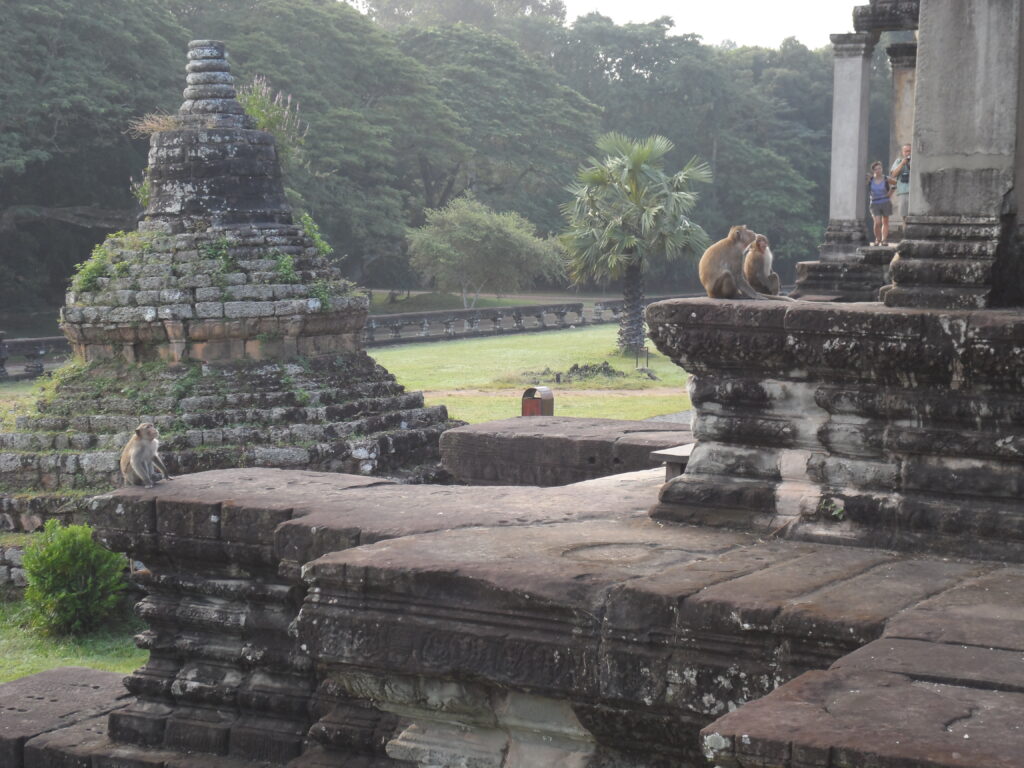
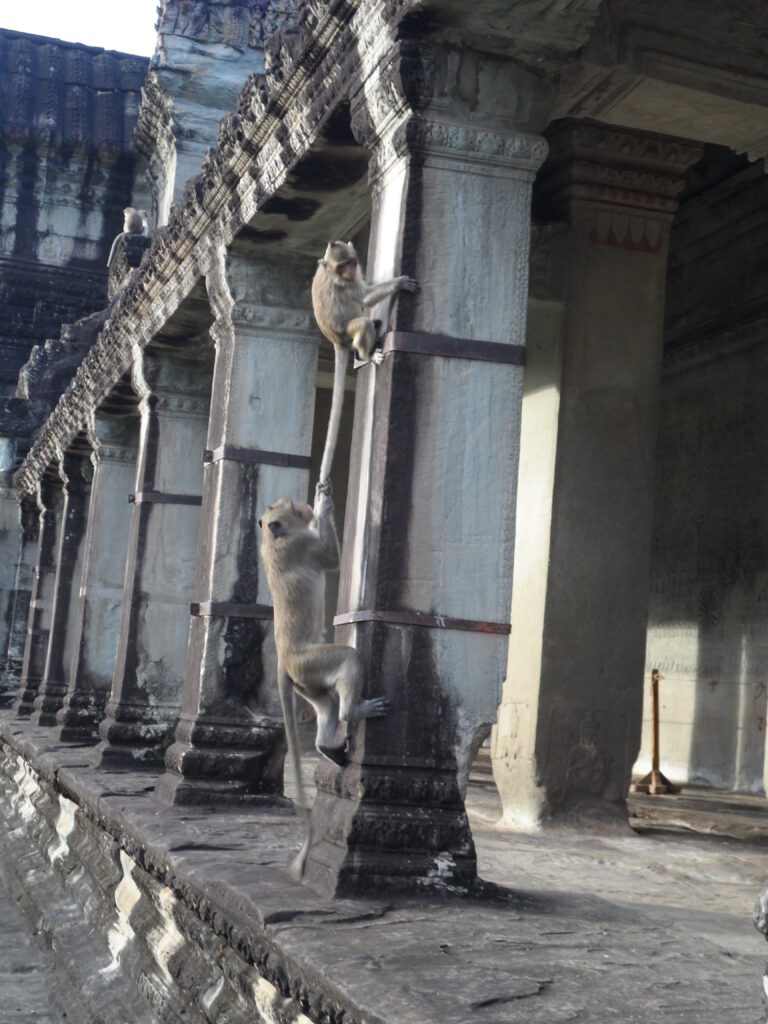
Overall, the 4 AM wakeup is worth the experience. Despite the crowds, there is a magical feeling to watching the sunrise over the temple. More so, the surprising quiet while sightseeing the grounds will leave a sense of history resonating in your mind. If you have a desire of traveling to far-flung locations and discovering ancient sites, this will scratch that itch. To make the most of the experience (and to avoid the worst of the crowds), most travel books (Lonely Planet/Frommers) have recommended routes through the full Angkor complex. The short version is to make the most out of the mornings (0700-1000) when the busses are allowing their visitors a breakfast. The lack of sleep will be worth the uninterrupted viewings.
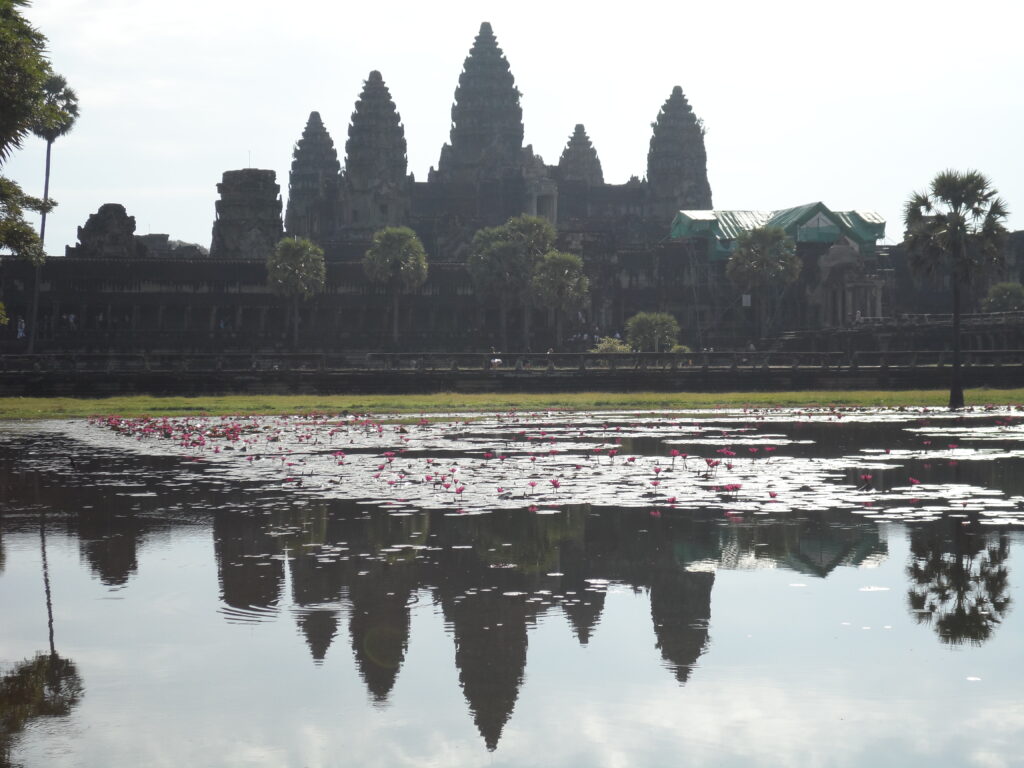
This is the first of a three-part blog on Cambodia’s famed Angkor complex. As I mentioned above, there are other temples that nearly equal the grandeur of Angkor Wat. Please look for updates coming in the following weeks.
If you’re interested in checking out some the previous articles, travel to Nepal Part I here, Part II here, and Part III here. Join my mailing list here to stay updated on travel and aviation updates and look for my next article on this must-see place.

We love Southeast Asia. There are many great temple complexes we have visited from Thailand to Vietnam but Angkor Wat is the best.